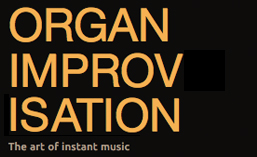One of the great things about my new home town of Baltimore is the numerous concert offerings. The Baltimore Symphony has a fabulous line up of programs, and the Peabody Institute seems to offer some sort of concert almost every day! Add in a few other concert series at local churches and other institutions and there is a true wealth of cultural opportunities to explore here. Oh, and should you happen to not find anything to your liking in Baltimore, Washington DC and Philadelphia are just a short drive away!
New and Different
Perhaps it’s my interests in improvisation and composition, but I’m always interested in hearing works that are new or lesser known. I might have also inherited part of this attitude from one of my organ teachers as well who always encouraged students to play pieces that everyone else wasn’t playing. Whatever the reason, I was led to attend a concert last week that included some twentieth-century works by well-known composers but which are seldom done. While not absolutely new, these works were certainly different. Presenting some different instrumental ensembles and technically very demanding, the works have been rarely performed since they were written. While we can lament the great masterworks that lay hidden and unplayed for many years, I suspect the selections I heard will remain largely unknown for the foreseeable future.
Melody (or lack thereof)
Many times on this blog, I have stressed the importance of color. Usually, this comes through increasing harmonic complexity. While a theorist may have delighted at the study of the scores from the concert I heard, as a listener, even with some of the techniques explained in the program, I found myself floating in a sea of sound that had no coherence (another favorite topic of mine!). I completely understood the development of aleatoric (chance) music at this concert because there was no melody for me to follow. There was no pulse to prompt me to tap my foot. It just seemed random. Why waste the time working out complicated structures when the listener simply cannot hear them? That’s when I decided you could call my old-fashioned: I like a good melody that I can remember, follow, and perhaps even sing.
Good Melody
What makes a good melody? What should we think about as we try to improvise a melody? Since I proposed the Four C’s of Improvisation, I’d now like to propose the Four R’s of a Remarkable Melody:
- Rhythm – Is the melody monorhythmic (like many hymns) or does it have a variety of rhythmic patterns?
- Range – Is the melody within a tight or wide range?
- Relaxation – Does the melody offer a sense of tension and release?
- Rotundity (I think I made this one up to fit my list.) – What shape does the melody have? Are there lots of skips or is it mostly stepwise?
I’m not sure that there are absolutely right answers for these questions, but I propose that a remarkable melody probably has something interesting about the rhythm (even if it is that it is all the same), a high point and a low point (preferably only one of each), builds and releases tension with a shape that can be recognized by the ear. All of these can apply regardless of the complexity of the harmonic language.
Evaluation and Application
At the next concert you attend, evaluate the melodies of the pieces on the programs? What makes them remarkable? Consider what qualities the next melody you improvise has. Does it move primarily in one direction? Could you create a longer piece simply by changing one of these four R’s at a time? A short four-bar melody could easily become a 24-measure piece just by stating the melody (4m), adjusting each of the criteria (4×4=16m), and then stating the original theme again (4m). Exploring these ideas will also give you the tools to produce development sections in larger sonata and symphonic forms. Even when you aren’t pleased with the results (as I wasn’t happy with the concert I attended), be brave enough to experience the new and different!
May all your melodies be remarkable!
Glenn
Recent additions to organimprovisation.com:
Themes:
Newsletter Issue 33 – 2015 02 23
See the complete list of past newsletter issues here.
Sign up to receive future issues using the box to the right on this page.
